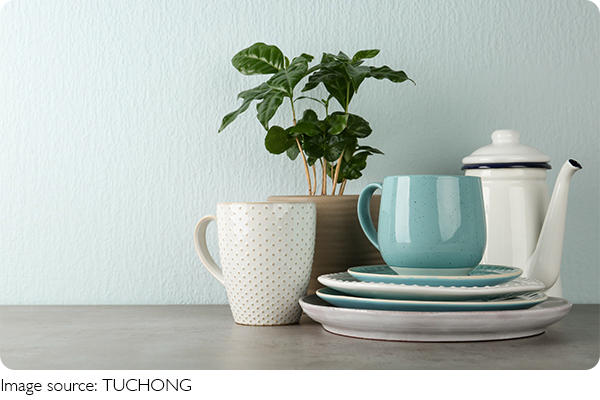Safety In Tableware

When addressing tableware safety, our primary concern revolves around the potential precipitation of heavy metals, such as lead and cadmium, from the tableware.
These metals, when deposited and accumulated in the human body, can inflict harm on bones, internal organs, and the nervous system.
To make informed choices for safer tableware, it's crucial to comprehend the origins of tableware poisoning. The major contributors to toxic substances in ceramic tableware are the three raw materials: the embryo, glaze, and color, all processed through firing. Potential toxicity usually emanates from these components.
Generally, brightly colored glazed tableware, particularly those with ice crack glaze underglaze, is not recommended due to the risk of heavy metal precipitation from the cracks. However, reputable big brands often adhere to safer practices.
Quartz crystals: Earth's timekeepers shaping modern connectivity.
Bridge engineering reflects a journey of theoretical advancements and the transformative power of infrastructure on society.
It is essential to understand fundamental principles when navigating the sea.
Oceans: Lifeline for Earth's Future—Celebrate, Protect, Sustain.
Mudflats: Hidden gems supporting life's intricate dance between land and sea.
Terraced fields reshape slopes for efficient farming, optimizing yields while conserving soil and water.
Examining the three raw materials, the embryo of ceramic tableware primarily consists of clay, with kaolin being a prevalent choice due to its natural composition without chemical additives. Fired at temperatures exceeding 1,000°C, it is deemed non-toxic and harmless. The quality may vary, with rough pottery being the lowest grade, characterized by a water absorption rate between 5-15%.
Rough pottery, often seen in Japanese-style tableware, embodies a rustic charm, with its impurities imparting a pronounced sense of age. Despite being a lower-grade ceramic, its use is prevalent in handmade and artisanal Japanese tableware, reflecting a casual and authentic aesthetic.
The glaze, forming a glass-like outer layer after firing, comes in various types. Regular manufacturers, regardless of colored or colorless glazes, are generally considered safe as they decompose heavy metals during firing.
The final component, colorants, is the primary source of potential toxicity. The colors and patterns on tableware are achieved using colorants, either industrial or stickers. The crucial aspect lies in the process, particularly whether it involves "under the glaze," or "glaze color."
"Under the glaze" ensures the pigment is enclosed by the glaze during firing, preventing heavy metal precipitation and ensuring safety, given the firing temperature exceeds 1200℃.
In essence, understanding the intricacies of ceramic tableware components and opting for reputable brands can significantly mitigate the risks associated with heavy metal poisoning, fostering a safer dining experience.
In the quest for tableware safety, delving deeper into the intricacies of ceramic composition becomes paramount. The vibrant hues of glazed tableware may allure, but caution is advised, particularly with brightly colored varieties and those featuring ice crack glaze underglaze, as these may harbor hidden risks of heavy metal release through the cracks.

Exploring the three essential raw materials, the ceramic tableware embryo, predominantly composed of clay, often leans towards kaolin due to its natural origin devoid of chemical additives. Fired at temperatures exceeding 1,000°C, this process ensures non-toxicity, with rough pottery emerging as the lowest-grade ceramic.
Despite its rustic appearance and water absorption rate between 5-15%, rough pottery finds a niche in Japanese-style tableware, embodying a tangible connection to craftsmanship and tradition.
The glaze, forming a protective layer after firing, encompasses various types. Regardless of color, reputable manufacturers adhere to safety standards, ensuring the decomposition of heavy metals during firing.
Colorants, responsible for tableware patterns, pose the primary risk, emphasizing the importance of manufacturing processes like "under the glaze" to secure the pigment within the glaze at temperatures surpassing 1200℃, preventing heavy metal precipitation and ensuring overall safety.

 · News team
· News team